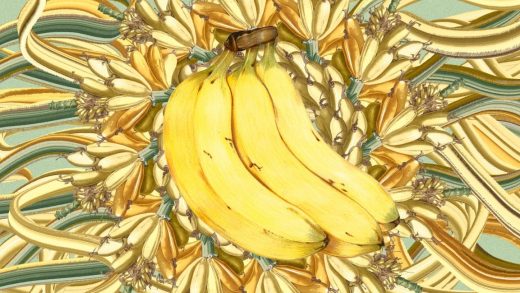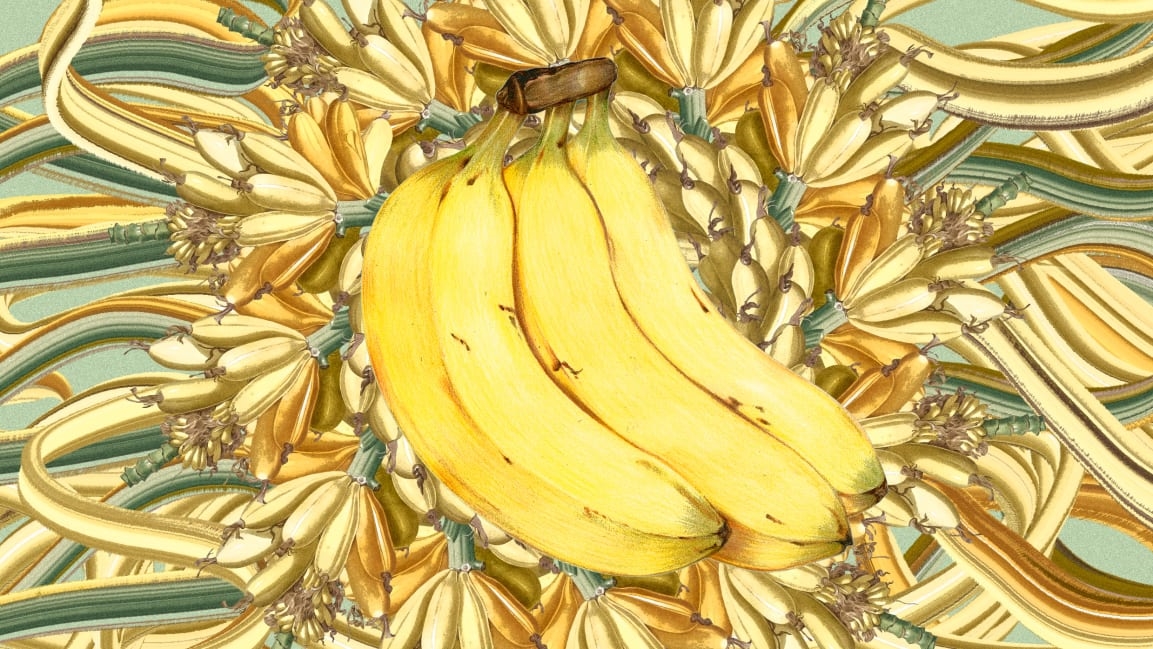Scientists are racing to reengineer the banana before it’s gone forever
The banana, as we know it, is in trouble. In August, lab tests in Colombia confirmed that a fungus that destroyed some banana plantations in countries like the Philippines and India had arrived in Latin America, the heart of the world’s banana export economy. The fungus has no cure—and because the bananas available in U.S. stores are cloned and genetically identical, when the disease kills one plant, every other nearby plant is also at risk.
In labs in the U.K. and Australia, researchers are racing to find ways to save one of the world’s most popular fruits before it’s too late. “I think it was an industry consensus that it was only a question of time before the disease reached Latin America,” says Gilad Gershon, CEO of Tropic Biosciences, a startup using gene editing to try to create a version of banana that’s resistant to the disease. For now, the disease has only been found in Colombia—where the government declared a state of emergency and destroyed crops—but it likely won’t be long before it shows up in Ecuador, which grows most of the bananas sold to the U.S. and Europe. “It’s fair to assume that we’re talking probably about a number of years before this spreads throughout Latin America to all the key banana-growing locations.”
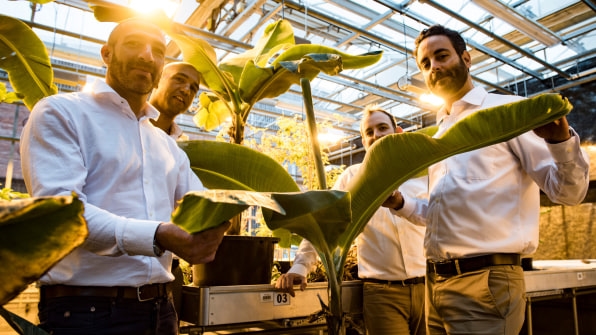
It’s an echo of a challenge that the industry faced before. Until the 1950s, massive banana plantations grew a type of banana called the Gros Michel—reportedly sweeter and tastier than the standard banana available in grocery stores today—but a different version of the same fungus, a type of Panama disease, killed off crops. Banana companies scrambled to find an alternative, and started growing the Cavendish, a variety that was resistant to the first variant of the fungus. The Cavendish is ubiquitous now. But it’s at risk from the fungus that’s currently spreading, called Panama disease Tropical Race 4 or TR4, and now there’s no other variety that can easily replace it. While there are around 1,000 varieties of banana plants, the Cavendish is unique in its ability to grow quickly, and ship long distances—and it has the taste and appearance that consumers now expect. (Many other varieties of banana are also susceptible to TR4, in any case.)
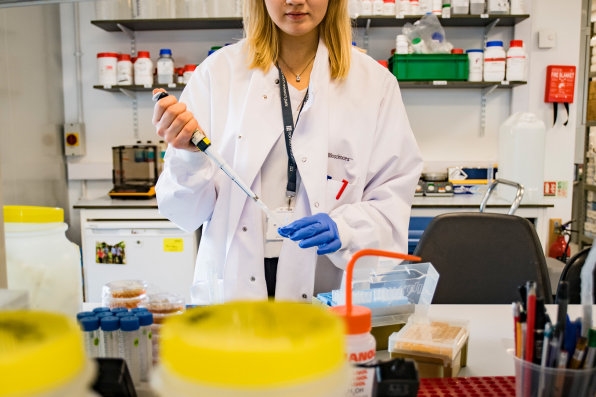
“Dole, Del Monte, they all market the same type of banana,” says Randy Ploetz, a plant pathologist at the University of Florida who was the first to discover the new fungus in bananas from Taiwan in the late 1980s. “It’s remarkably uniform. When they propagate the crop, it’s done clonally. So these plantations are basically uniform monocultures of the same clone of banana. If you have a lethal pathogen, like this Tropical Race 4, it moves pretty rapidly within this monoculture and can do a great deal of damage.” The disease doesn’t make the fruit unsafe to eat, but moves through the plant, clogging vessels that move nutrients and water, so that the plant eventually dies. It can last for decades in the soil, so when one crop dies the land can’t be replanted.
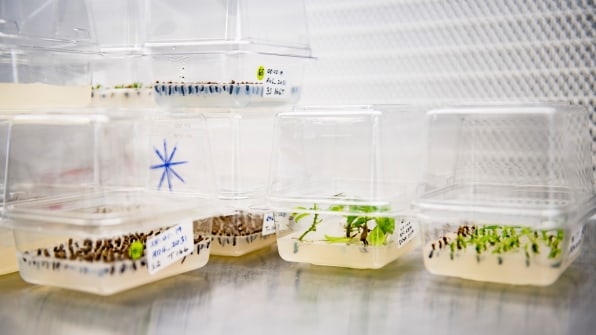
At Tropic Biosciences’ lab in the U.K., researchers use CRISPR, a gene editing tool, to work on crops like coffee; CRISPR can precisely snip out part of a plant’s genome, and the researchers have been able to cut out the gene associated with caffeine. But for making a disease-resistant Cavendish banana, they’re using additional technology that they’ve developed internally. Instead of taking out a gene, the tool works with RNA interference genes, a type of gene that can turn off specific functions in a cell. That “silencing” action can be directed outside of the banana’s own cells to turn off genes in pathogens, like the fungus. “It’s a strategy to directly attack a pathogen,” says Eyal Maori, chief science officer at Tropic Biosciences.
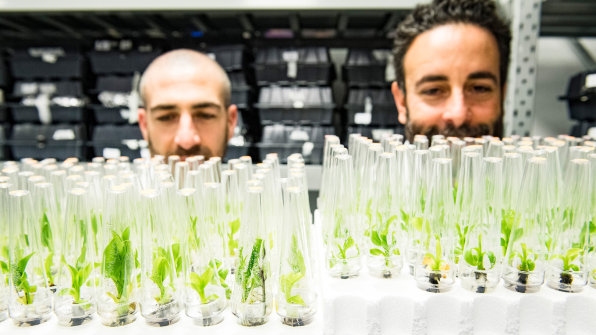
That’s something that isn’t possible to do with traditional gene editing. It’s also a faster solution; while it might take as long as a decade for a normal gene editing process to identify a banana gene that could be changed to create the right disease resistance, the startup was able to find the right target within a few months. Because it targets genes in the pathogen and not the banana, the key characteristics of the banana—from flavor to how it grows in the field—shouldn’t change. The company plans to begin field testing next year. Because the technology is non-transgenic (i.e., it doesn’t incorporate any foreign DNA in the banana), the bananas likely wouldn’t be considered genetically modified in the U.S.
In Australia, scientists are testing a different approach. After several years of research, they discovered a gene in a wild banana that was resistant to the disease, and inserted that gene in the Cavendish. In a remote part of Australia near the town of Humpty Doo (yes, Humpty Doo), they’ve successfully conducted field trials. After one three-year round of trials, they’re now in the middle of an even larger round of tests. The genetically modified banana could potentially be on sale in a few years, depending on the time that it takes to get regulatory approval. Whether consumers would embrace it is another question. “The unfortunate thing, and I think it’s really unfortunate, is that the consumers are in general unwilling to try GM bananas, even though they’re abundantly safe,” says Ploetz. James Dale, the Queensland University of Technology researcher studying the banana, says that his team is now also working on a gene-edited version that wouldn’t use foreign DNA, and thus might be more readily accepted.
Some might question whether it’s necessary to go to such lengths to save the banana in the first place. Corporations like United Fruit Company (which later morphed into Chiquita) stoked global demand for the fruit, but arguably, people living outside tropical areas could go back to life before the banana and eat local fruit instead. But in some developing countries, the fruit is a key source of nutrition. And, for better or worse, the crop has also become a cornerstone of many economies. Bananas are a $44 billion industry and a key source of jobs. In 2018, the U.S. imported $2.8 billion worth of bananas in 2018, more than any other country
“The banana is a very important crop, both from a nutrition perspective for a lot of people globally, and it also does provide livelihoods for many, many people in the developing world,” says Gershon. “It’s the basis of several economies globally. This is a true challenge, and we are working very hard to solve it.”
(20)

